Joint- or Crack-Opening Resistance Evaluation of Waterproofing Material and System for Structural Sustainability in Railroad Bridge Deck
Abstract
1. Introduction
1.1. Background
1.2. Waterproofing Systems to Protect the Degradation of Railroad Bridge Deck
1.3. Existing Standardized Test Methods for Waterproofing Materials
2. Theoretical Discussion
2.1. De-Bonding and Cohesive Failure due to Zero-Span Tensile Stress
- = stress concentration factor
- = highest stress
- = nominal stress
2.2. Deriving Opening Range Condition for Testing; Finite Element Method Analysis
2.2.1. Finite Element Method Analysis Conditions (Demonstration Using Korean Standards)
2.2.2. Opening Conditions for Basis of Testing Condition (Demonstration for Obtaining Minimum Opening Range)
3. Proposed Evaluation Method and Criteria for Joint-Opening Resistance Evaluation of Waterproofing Membranes
3.1. Test Specimen for Joint-Opening Evaluation
3.2. Selection and Installation of Waterproofing Systems for Testing
3.3. Joint-Opening Range for Testing (Sample)
3.4. Testing Apparatus Design and Specimens Setting for Joint-Opening Evaluation
4. Evaluation Results of Waterproofing Systems Resistance Performance to Joint Opening (Demonstration)
4.1. Test Demonstration Result
4.2. Grading Criteria and Application Method of the Evaluation Result
5. Conclusions
- (1)
- The opening range to be used for the testing was determined based on the FEM analysis of a concrete bridge deck deformation due to the wheel load of train operation. A FEM modelling of a railway bridge track based on the conditions compliant to the KRC 14030 was used for the demonstration of the proposed evaluation method, and future application of this test method, if applicable, can adopt a similar regime to derive the minimum opening range for the testing.
- (2)
- The demonstration of this evaluation method serves to clearly delineate the difference in the joint-opening resistance performance of waterproofing systems commonly used in railroad bridge decks. The proposed joint opening resistance performance testing in this study evaluated the respective performance of 4 different waterproofing membranes (CSC, PUC, SAS, CAS) based on changing joint opening width. The demonstration was able to determine that the CAS type has the highest relative joint-opening resistance performance among the 4 types.
- (3)
- Further research must be performed to improve on the accuracy of the evaluation method such that it can be made employable in different national standards. The research results in this study are intended to assist in the development of laboratory watertightness testing methods for waterproofing membranes subjected to various degradation conditions (one such being resistance to joint opening). The demonstrated evaluation regime will have to include more accurate variables that comply with the environmental conditions of railroad bridge decks. When this can be accomplished through further research, selection of appropriate waterproofing membranes with high watertight performance can be selected for high maintenance infrastructures such as railway bridges. It can also provide a platform for developing higher-performance waterproofing membranes through competition based on the evaluation results. It is hoped that future designs of railroad bridge waterproofing can take into consideration the effect of waterproofing on the sustainability of the structure against water damage-based corrosion of PSC, and that the proposed evaluation can be a contributing factor in the selection of optimal waterproofing systems.
Author Contributions
Funding
Conflicts of Interest
Abbreviations
| FEM | Finite Element Method |
| AREMA | American Railway Engineering and Maintenance-of-way Association |
| KTX | Korea Train Express |
| KR-C | Korean Railway Code |
| TGV | Train de Grand Vitesse |
| CRH | China Railway High-speed |
| PSC | Pre-Stressed Concrete |
| CSC | Cementitious Slurry Coating |
| UTM | Universal Testing Machine |
| PUC | Polyurethane Spray Coating |
| SAS | Self-adhesive Asphalt Sheet |
| CAS | Composite Asphalt Sheet |
References
- Korean National Railway. Railroad Bridge Surface Waterproofing Optimization Plan Research Report. Railw. Inform. Center 2007, 1–148. Available online: http://210.90.197.12/jsp/industry/ret/researchTechInfoDetail.jsp?menuId=M010210&objectId=0900271a800ebb66&docId=&p_id2=1107100900271a800ebb66&q_levCd=&q_objectseq=325&q_totalPage=56&q_frPage=24&q_name=1 (accessed on 9 September 2020).
- Transport Infrastructure Ireland. Waterproofing and Surfacing of Concrete Bridge Decks. TII Publ. 2000. Available online: https://www.tiipublications.ie/library/DN-STR-03009-02.pdf (accessed on 9 September 2020).
- Schijve, J. Fatigue of Structures and Materials; Springer: Berlin, Germany, 2001; p. 90. ISBN 978-0792370147. [Google Scholar]
- Nielson, D.; Chattopadhyay, G.; Raman, D. Life Cycle Cost Estimation for Railway Bridge Maintenance. Int. Heavy Haul Assoc. Conf. 2013. Available online: https://www.researchgate.net/publication/273451656_Life_Cycle_Cost_Estimation_for_Railway_Bridge_Maintenance (accessed on 9 September 2020).
- Taniguchi, N.; Kouzuiki, T.; Tanahashi, A.; Ikariyama, H.; Yoda, T. A Study about the Waterproofing Systems in the Slab for Railway Bridges. Rail. Bridge Slab Symp. J. Available online: http://library.jsce.or.jp/Image_DB/committee/steel_structure/book/56580/56580-0213.pdf (accessed on 17 August 2020).
- Raymond, G.P. Analysis of Track Support and Determination of Track Modulus, Transportation Research Record 1022. Available online: http://onlinepubs.trb.org/Onlinepubs/trr/1985/1022/1022-011.pdf (accessed on 12 September 2020).
- Bilotti, P.E. Long Term Deck Waterproofing of Highway and Rail Bridges. 2000. Available online: https://www.semanticscholar.org/paper/LONG-TERM-DECK-WATERPROOFING-OF-HIGHWAY-AND-RAIL-Bilotti/ae236d97e3aa225bf3d1c4a20061bcff18015599?p2df (accessed on 12 September 2020).
- Dammyr, Ø.; Nilsen, B.; Thuro, K.; Grøndal, J. Possible Concepts of Waterproofing of Norwegian TBM Railway Tunnels Civil Engineering for Underground Rail Transport. Rock Mech. Rock Eng. 2014, 47, 985–1002. [Google Scholar] [CrossRef]
- Song, L.; Jun, Y.; Xianhua, C.; Guotao, Y.; DEGOU, C. Application of Mastic Asphalt Waterproofing Layer in High-Speed Railway Track in Cold Regions. Appl. Sci. 2018, 8, 667. [Google Scholar] [CrossRef]
- Lai, Z.F.; Wang, W.J.; Xia, Y.B.; He, H.Z.; Wu, J.P.; Zhu, N. Application Research of High-strength Polyurethane Waterproofing Coating in Waterproofing Engineering of Intercity Railway Bridge Deck. China Build. Waterproof. 2016. [Google Scholar] [CrossRef]
- Zhang, F.; Shang, F. Waterproofing Technology for Steel Bridge Deck of Maputo Bridge, Mozambique. China Build. Waterproof. 2020. [Google Scholar] [CrossRef]
- Xu, H.; Gao, J.Q. Study on the Design of Corrosion Resistant Coating of Railway Steel Bridge Deck. Railw. Standard Design 2019. [Google Scholar] [CrossRef]
- Yang, J.C. Construction Technology Optimization of High-speed Railway Bridge Waterproof Protective Layer in Frigid Region. Value Eng. China Acad. J. Electron. Publ. House 2020, 12, 131–133. [Google Scholar]
- Price, A.R. Waterproofing of Concrete Bridge Decks: Site Practice and Failures. Trans. Road Res. Lab. 1991. Available online: https://trl.co.uk/sites/default/files/RR317.pdf (accessed on 17 August 2020).
- American Railway Engineering and Maintenance-of-Way Association, AREMA Part 29–Waterproofing. 2005. Available online: https://www.yumpu.com/en/document/read/51750577/arema-part-29-waterproofing (accessed on 2 September 2020).
- Zhang, X.Q. Analysis on Common Quality Problems and Countermeasures for Bridge deck pavement of expressway. Shanxi Arch. 2018, 44, 158–160. [Google Scholar]
- Xi, Y.P.; Li, L.F. Evaluation of Different Types of Waterproofing Membranes (Asphaltic and Non-Asphaltic) as Cost Effective Bridge Deck Barriers in Reducing Corrosive Chloride Effects. Colorado Depart. Trans. Appl. Res. Innov. Branch 2018. Available online: https://pdfs.semanticscholar.org/eba8/946f42877ac37a5514ced1814f732d64fab3.pdf (accessed on 21 August 2020).
- Oh, S.K. A new approach on waterproofing and water-leakage repair technology of concrete structure. Korea Concr. Inst. 2002, 2002, 101–118. [Google Scholar]
- Song, B.-C. Leakage of water on concrete structures and recently repair methods. Korea Concr. Inst. 2012, 24, 29–33. [Google Scholar]
- Park, S.-Y.; Park, I.-J.; Lee, J.-J.; Choi, S.-H.; Kim, S.-I. Analysis of dynamic behavior for underground structures under earthquake loading. Tunn. Technol. 2007, 9, 205–217. [Google Scholar]
- Zhou, Q.H.; Xu, Q.W. Experimental study of waterproof membranes on concrete deck: Interface adhesion under influences of critical factors. Mater. Design 2009. [Google Scholar] [CrossRef]
- Ferdous, W.; Manalo, A.; Wong, H.S.; Abousnina, R.; AlAjarmeh, O.S.; Yan, Z.G.; Schubel, P. Optimal design for epoxy polymer concrete based on mechanical properties and durability aspects. Construct. Build. Mater. 2020. [Google Scholar] [CrossRef]
- Kohtbehsara, M.M.; Manalo, A.; Aravinthan, T.; Reddy, K.R. Effect of elevated in-service temperature on the mechanical properties and microstructure of particulate-filled epoxy polymers. Polym. Degrad. Stab. 2019. [Google Scholar] [CrossRef]
- Su, J.; Bloodworth, A.G. Simulating composite behaviour in SCL tunnels with sprayed waterproofing membrane interface: A state-of-the-art review. Eng. Struct. 2019. [Google Scholar] [CrossRef]
- Phaedonos, A.D. Waterproofing of Concrete Bridge Decks and Specification Provisions and Quality Issues. Available online: https://concrete2019.com.au/mobile/pdf/full-paper_5.pdf (accessed on 2 September 2020).
- Al-Zahrani, M.M.; Al-Dulaijan, S.U.; Ibrahim, M.; Saricimen, H.; Sharif, F.M. Effect of waterproofing coatings on steel reinforcement corrosion and physical properties of concrete. Cem. Concr. Compos. 2002, 24, 127–137. [Google Scholar] [CrossRef]
- Jeong, J.-S.; Lee, S.-G.; Lee, K.-Y.; Jeong, H.-O.; Kim, H.-H. A case study on the effects on underground structure due to changes in the ground water level and ground stress. Korean Geo-Environ. Soc. 2015, 16, 13–21. [Google Scholar]
- Van Til, C.J.; Vallerga, B.A. Waterproof Membranes for Protection of Concrete Bridge Decks. Nat. Cooper. Highw. Res. Program Rep. 1976. Available online: http://onlinepubs.trb.org/Onlinepubs/nchrp/nchrp_rpt_165.pdf (accessed on 2 September 2020).
- Protecto Wrap Company. Concrete Repair Manual Concrete Sumps and Surfaces (Solutions for Repair and Coating); Protecto Wrap Company: South Cherokee Street Denver, CO, USA, 2009; pp. 8–11. [Google Scholar]
- Williams, D. Maintaining Critical Road, Rail and Bridge Infrastructure. Constr. Specif. 2016. Available online: https://www.constructionspecifier.com/maintaining-critical-road-rail-and-bridge-infrastructure/ (accessed on 4 September 2020).
- Benarbia, D.; Benguediab, M. Determination of Stress Intensity Factor in Concrete Material Under Brazilian Disc and Three-Point Bending Testes Using Finite Element Method. Period. Polytech. Mech. Eng. 2015, 59, 19–203. [Google Scholar] [CrossRef]
- Lofgren, I. Calculation of Crack Width and Crack Spacing. Conf. Paper Nord. Mini-Semin. 2007. Available online: https://www.researchgate.net/publication/257944065_Calculation_of_crack_width_and_crack_spacing (accessed on 16 August 2020).
- Steel Construction Institute, Design Guide for Steel Railway Bridges. Available online: https://www.steelconstruction.info/images/e/e0/SCI_P318.pdf (accessed on 2 September 2020).
- Kunieda, M.; Rokugo, K. Recent Progress of HPFRCC in Japan—Required Performance and Applications. J. Adv. Concr. Technol. 2006, 4, 19–33. [Google Scholar] [CrossRef]
- Korean Rail Network Authority. Development of Bridge Surface Waterproofing System for Railroad Bridge Deck; Performance Evaluation Research Report by the Korean Rail Network Authority; Railway Industry Information Center: Seoul, Korea, 2006. [Google Scholar]
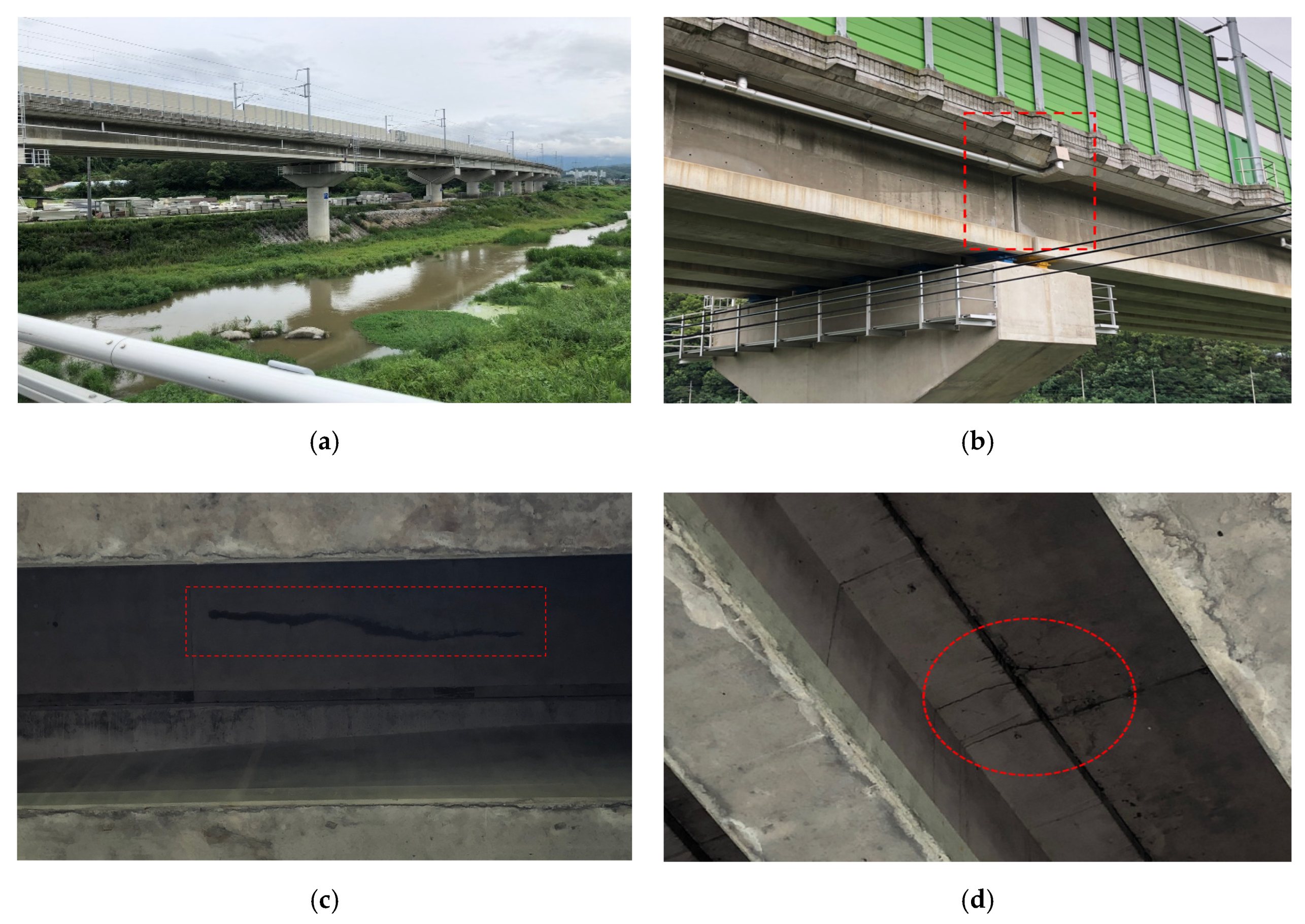
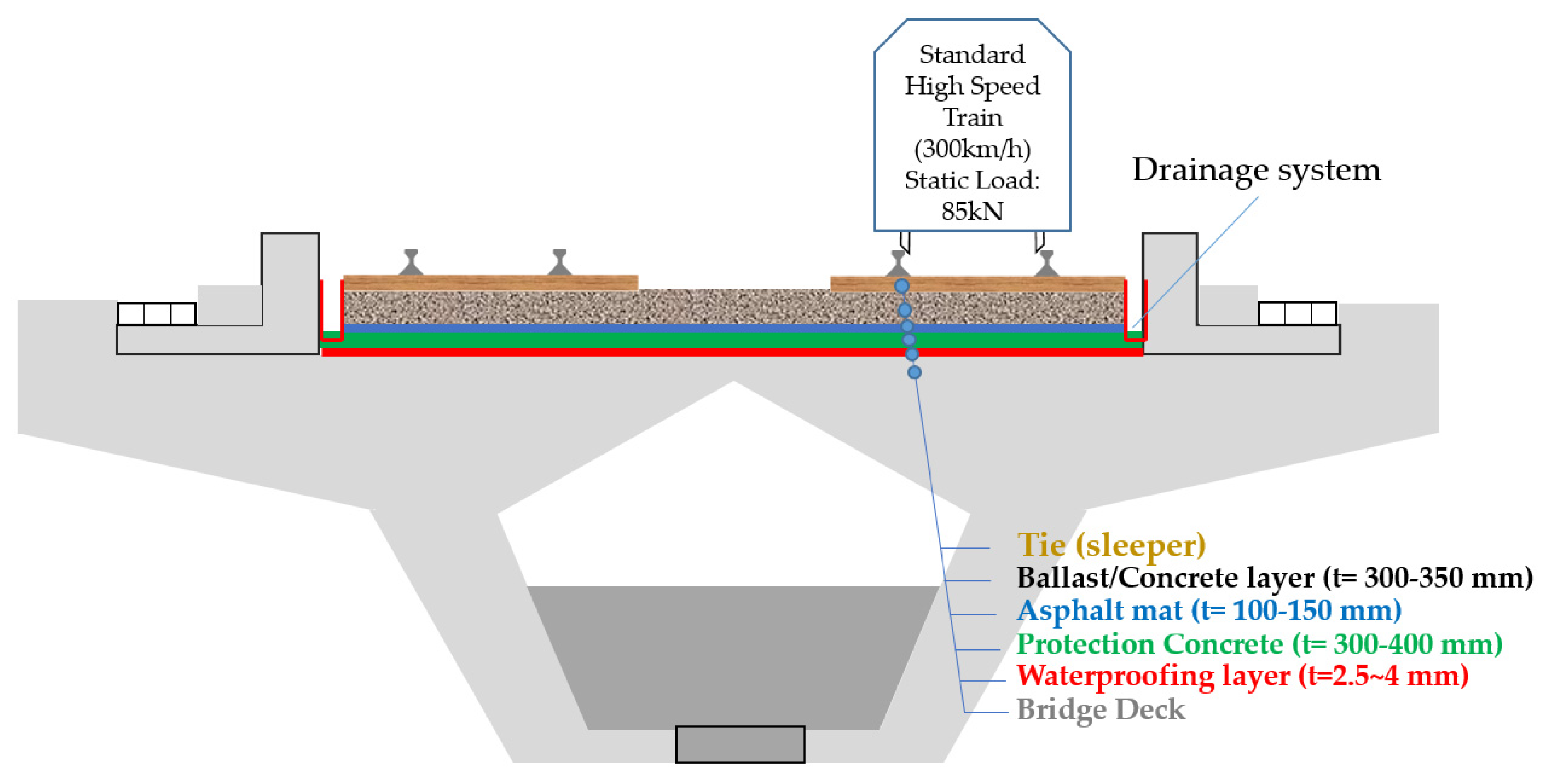
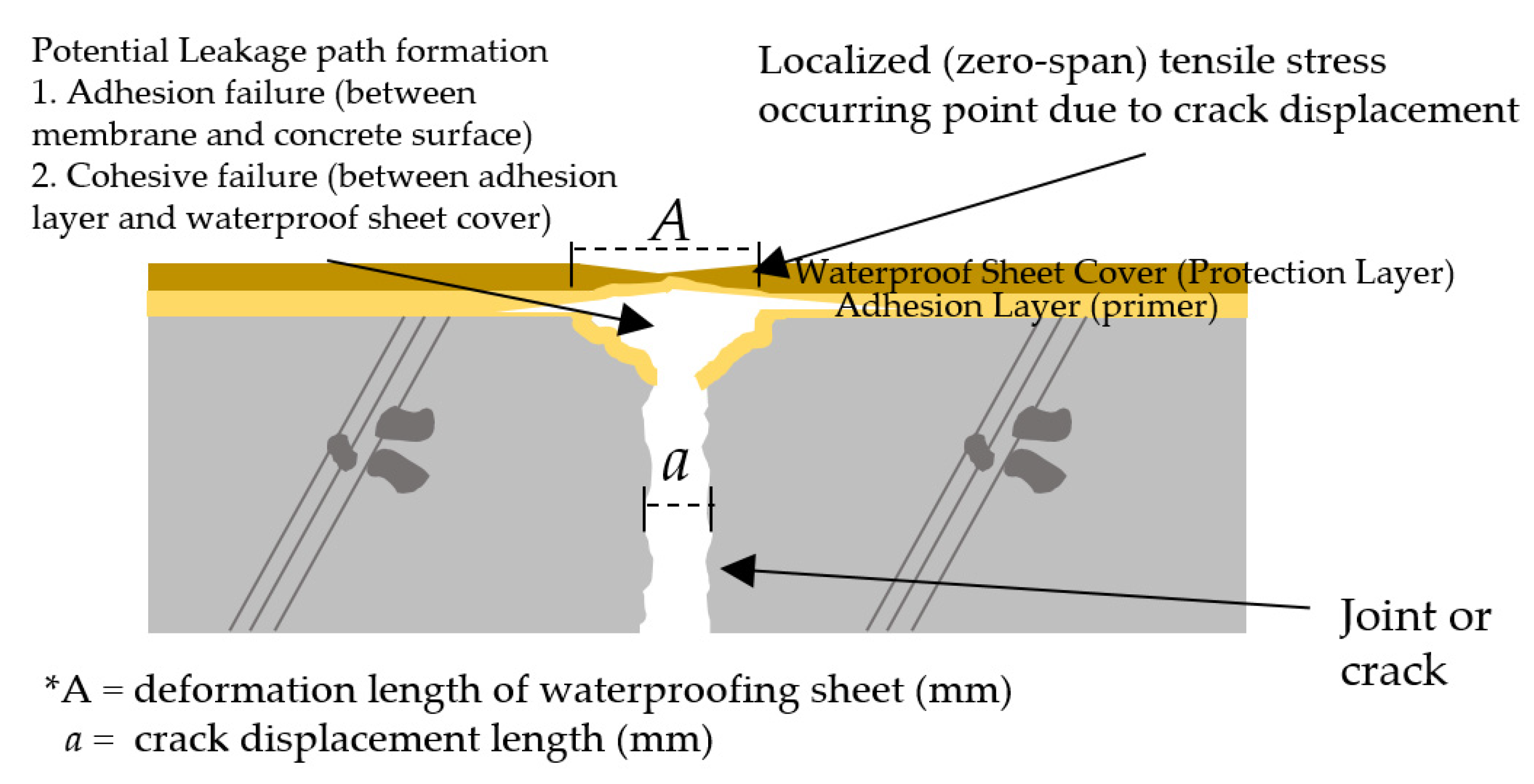
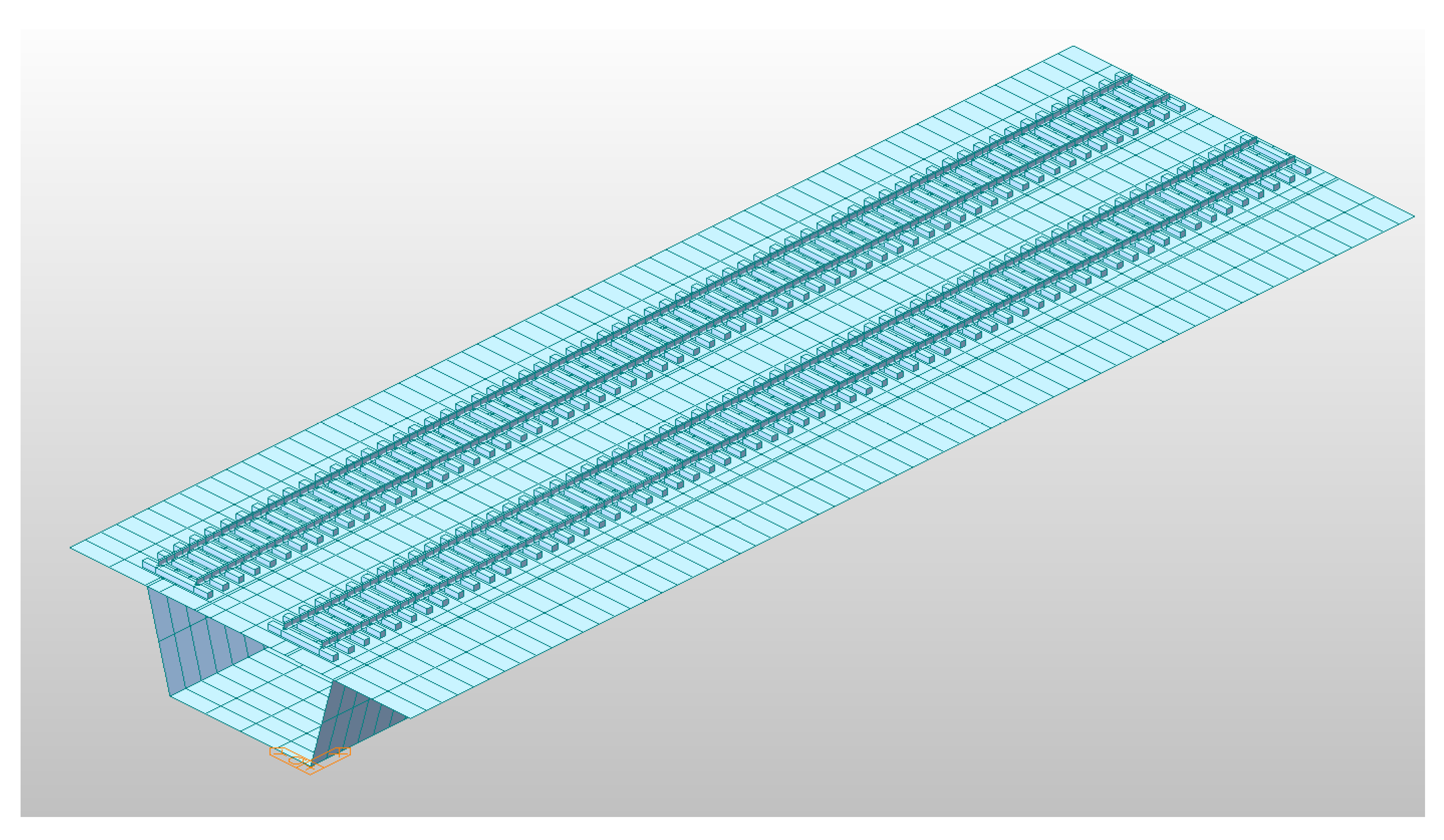
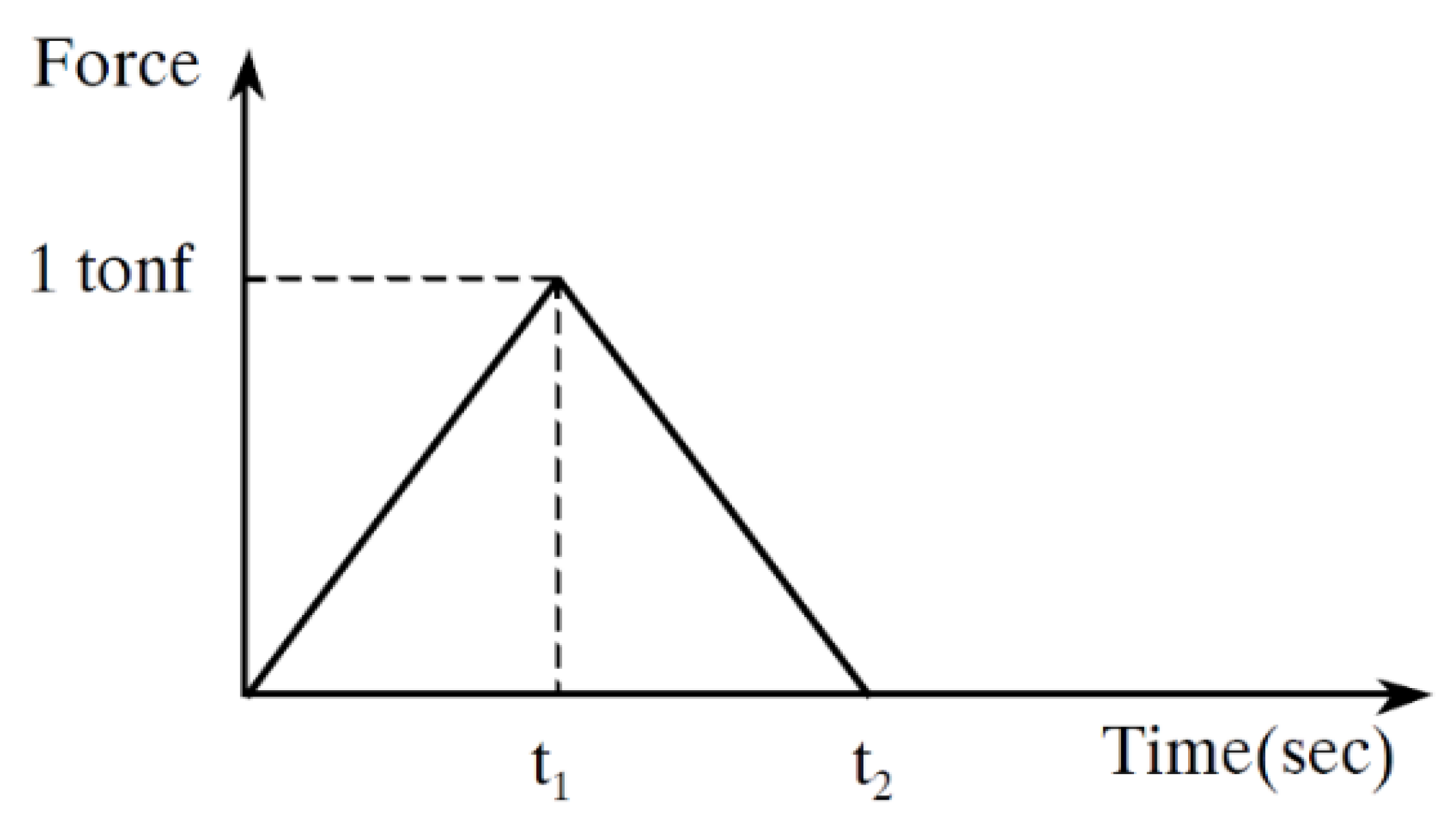

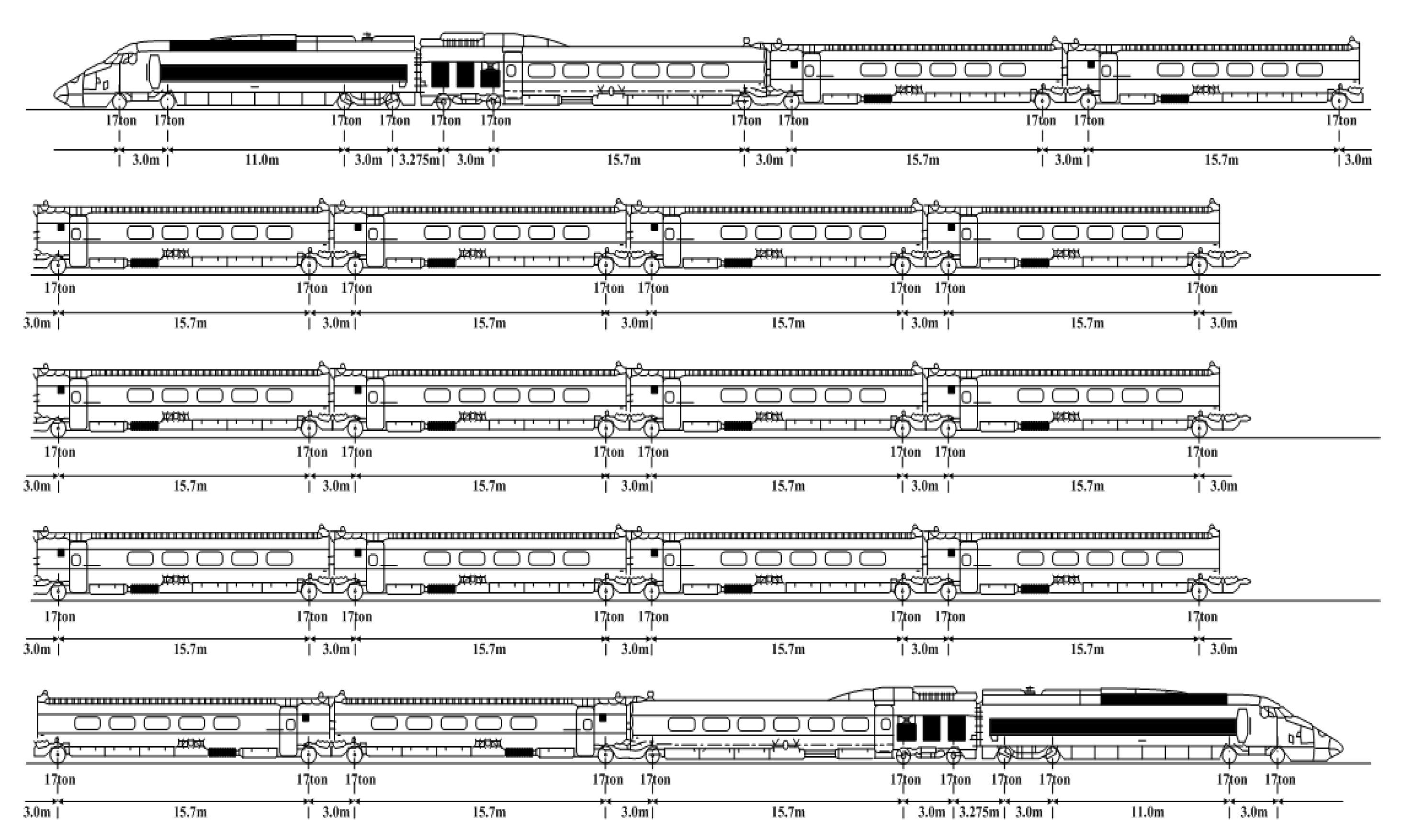
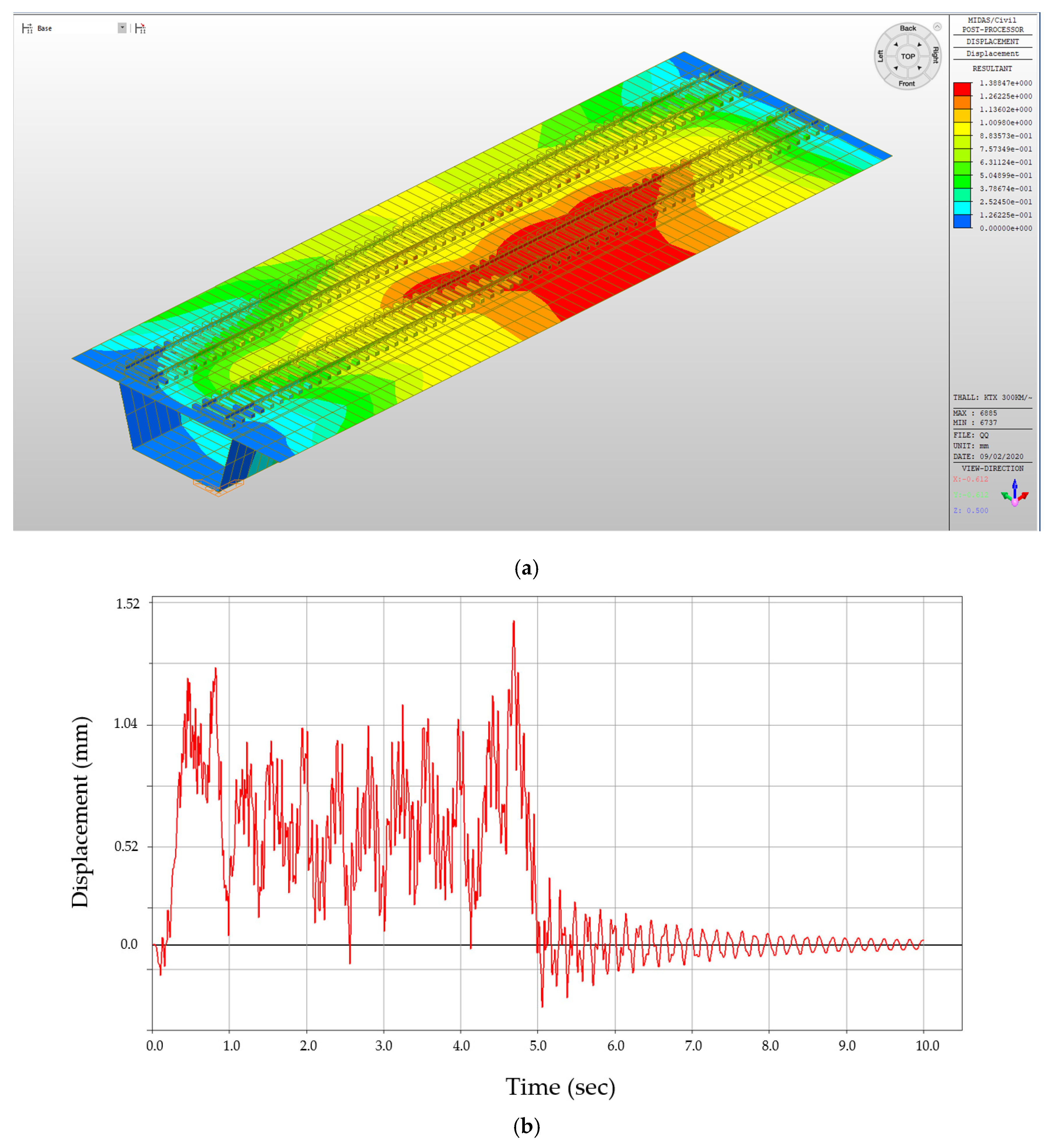
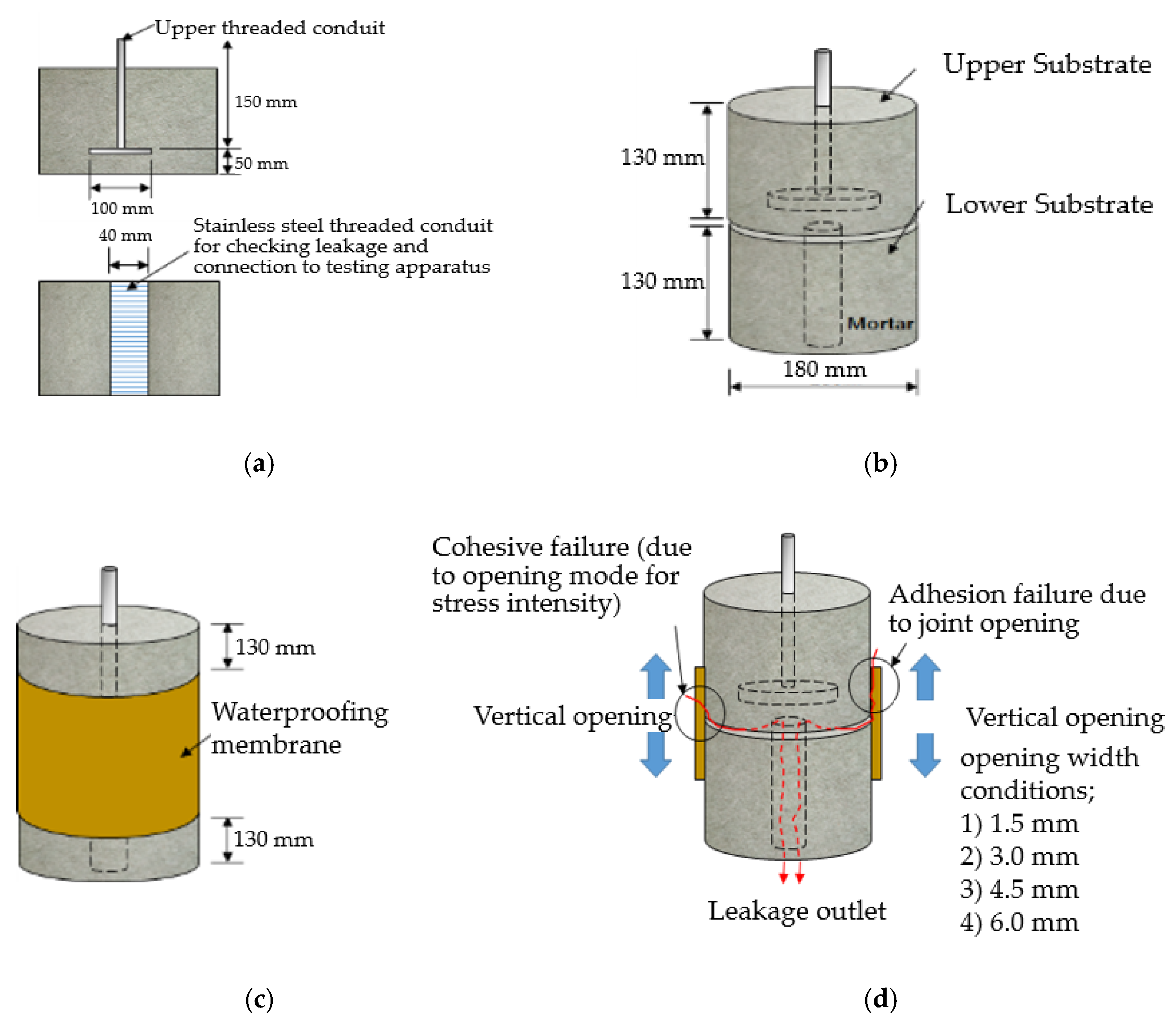


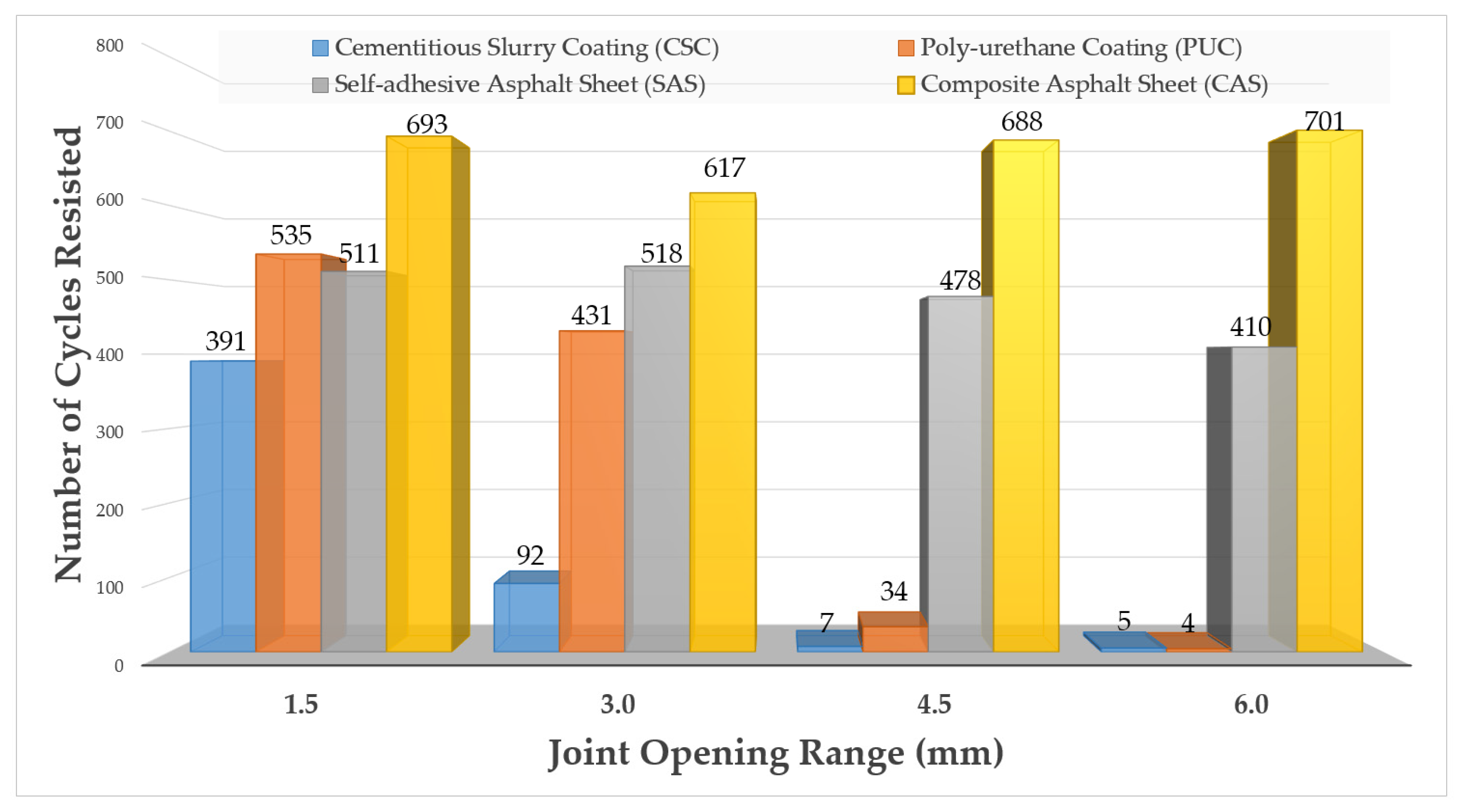
| Methods | Sheet Membrane System (e.g., Asphalt Sheet, Composite Sheet) | Liquid Applied Membrane System (e.g., Polyurethane Coating) | Cementitious Membrane System (e.g., Cementitious Slurry Coating) |
|---|---|---|---|
 | 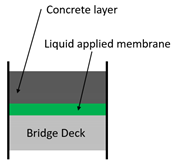 |  | |
| Thickness (mm) | 2~4 | 2~3 | 2~3 |
| Average modulus of elasticity (N/mm2) | 8.72 GPa~12.51 GPa | 0.93 GPa~5.31 GPa | 10.14 GPA~14.38 GPA |
| Protection layer type and thickness (mm) | Asphalt concrete: 40 | Asphalt concrete: 40 | None |
| Nations | Waterproofing Materials and Types | ||
|---|---|---|---|
| Sheet Membrane System | Liquid Applied Membrane System | Cementitious Membrane System | |
| U.S. | O | O | X |
| European Nations | O | O | X |
| Japan | O | O | X |
| Korea | O | O | O |
| China | O | O | O |
| Performance Criteria | National Standards | ||||
|---|---|---|---|---|---|
| ASTM D 7832 | KS F 4917, KS F 4935 | GB 50108 | BS 8102 | JIS A 6909, JIS A 6021, JIS A 6008 | |
| Tensile strength | O | O | O | O | O |
| Elongation | O | O | O | O | O |
| Chemical resistance | O | O | O | O | O |
| Adhesion strength | O | O | O | O | O |
| Crack bridging * | O | O | X | X | X |
| Joint opening resistance | X | X | X | X | X |
| Division | Element | Item | Input Data |
|---|---|---|---|
| Rail | 3-dimensional solid element | Type | UIC60 |
| Modulus of elasticity (kN/mm2) | 206 | ||
| Weight density (kN/m3) | 0.785 | ||
| Poisson’s ratio | 0.30 | ||
| Height (mm) | 172 | ||
| Width of rail head (mm) | 72 | ||
| Width of rail base (mm) | 150 | ||
| Area (mm2) | 76.86 | ||
| X axis moment of inertia (mm4) | 3.05 × 10−6 | ||
| Z axis moment of inertia (mm4) | 5.13 × 10−6 | ||
| Tensile strength (N/mm2) | 880 | ||
| Pre-cast concrete sleeper | 3-dimensional solid element | Modulus of elasticity (kN/mm2) | 33.5 |
| Weight density (kN/m3) | 1.3 | ||
| Poisson’s ratio | 0.18 | ||
| Width (mm) | 265 | ||
| Length (mm) | 2400 | ||
| Height (mm) | 195 | ||
| Z axis moment of inertia (mm4) | 1.41 × 108 | ||
| Rail pad | 3-dimensional spring-damper element | Vertical direction modulus of elasticity, kw (kN/mm) | 100 |
| Vertical direction damper coefficient (kN sec/mm) | 0.098 | ||
| Ballast | 3-dimensional spring-damper element | Vertical direction modulus of elasticity, (kw (kN/mm) | 200 |
| Vertical direction damper coefficient (kN sec/mm) | 0.98 |
| Cementitious Slurry Coating (CSC) | Polyurethane Spray Coating (PUC) |
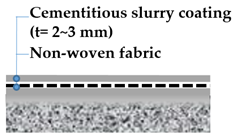 | 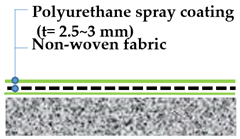 |
| Self-Adhesive Asphalt Sheet (SAS) | Composite Asphalt Sheet (CAS) |
 | 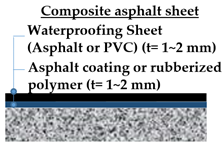 |
| Specimen | Procedure | |||
|---|---|---|---|---|
| Substrate Preparation | Base Preparation | Membrane Installation | Specimen Complete | |
| Cementitious slurry coating | 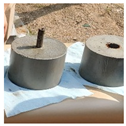 | 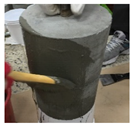 | 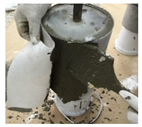 | 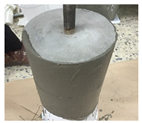 |
| Polyurethane spray coating | 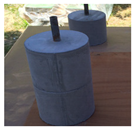 | 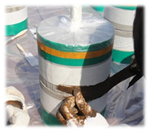 | 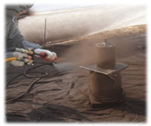 | 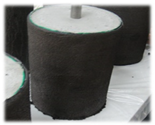 |
| Self-adhesive asphalt sheet | 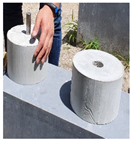 |  | 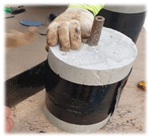 | 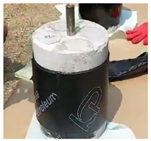 |
| Composite asphalt sheet | 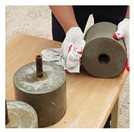 | 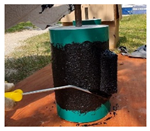 | 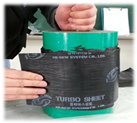 | 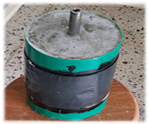 |
| Opening Range | Description (Example Criteria) |
|---|---|
| 1.5 mm 1 | Normal deformation range of normal PSC substrate of 10 m span when no cracks are present or crack opening of 1.5 mm is expected. |
| 3.0 mm | Average joint opening range of normal PSC substrate of 10 m span. Joints of at least 3.0 mm width will be subject to this range of opening when the bending moment due to train wheel load is considered. |
| 4.5 mm | High joint opening range of normal PSC substrate of 10 m span. Joints of at least 4.5 mm width depth will be subject to this range of opening when the bending moment due to train wheel load is considered. |
| 6.0 mm | Extreme joint opening range of normal PSC substrate of 10 m span. Joints of this will be subject to this range of opening when the bending moment due to train wheel load is considered. |
| Grade | Description (Example) |
|---|---|
| Minimal opening resistance capacity grade: (e.g., 1.5 mm opening resisted on average) | Materials such as cementitious slurry system, capable of handling up to 1.5 mm opening range but no higher to ensure long term durability. Materials of this grade can be used in:
|
| Moderate opening resistance capacity grade (e.g., 3.0 mm opening resisted on average) | Materials such as polyurethane coating, capable of handling up to 3.0 mm opening range but no higher. Materials of this grade can be used in:
|
| High opening resistance capacity grade (e.g., 4.5 mm opening resisted on average) | Materials such as self-adhesive sheets, capable of handling up to 4.5 mm opening range. Materials of this grade can be used when:
|
| Excellent opening resistance capacity grade (e.g., 6.0 mm opening resisted on average) | Materials such as self-adhesive sheets, capable of handling up to 4.5 mm opening range. Materials of this grade can be used when:
|
© 2020 by the authors. Licensee MDPI, Basel, Switzerland. This article is an open access article distributed under the terms and conditions of the Creative Commons Attribution (CC BY) license (http://creativecommons.org/licenses/by/4.0/).
Share and Cite
Oh, K.-H.; Kim, S.-Y.; Park, Y.-G. Joint- or Crack-Opening Resistance Evaluation of Waterproofing Material and System for Structural Sustainability in Railroad Bridge Deck. Materials 2020, 13, 4229. https://doi.org/10.3390/ma13194229
Oh K-H, Kim S-Y, Park Y-G. Joint- or Crack-Opening Resistance Evaluation of Waterproofing Material and System for Structural Sustainability in Railroad Bridge Deck. Materials. 2020; 13(19):4229. https://doi.org/10.3390/ma13194229
Chicago/Turabian StyleOh, Kyu-Hwan, Soo-Yeon Kim, and Yong-Gul Park. 2020. "Joint- or Crack-Opening Resistance Evaluation of Waterproofing Material and System for Structural Sustainability in Railroad Bridge Deck" Materials 13, no. 19: 4229. https://doi.org/10.3390/ma13194229
APA StyleOh, K.-H., Kim, S.-Y., & Park, Y.-G. (2020). Joint- or Crack-Opening Resistance Evaluation of Waterproofing Material and System for Structural Sustainability in Railroad Bridge Deck. Materials, 13(19), 4229. https://doi.org/10.3390/ma13194229




